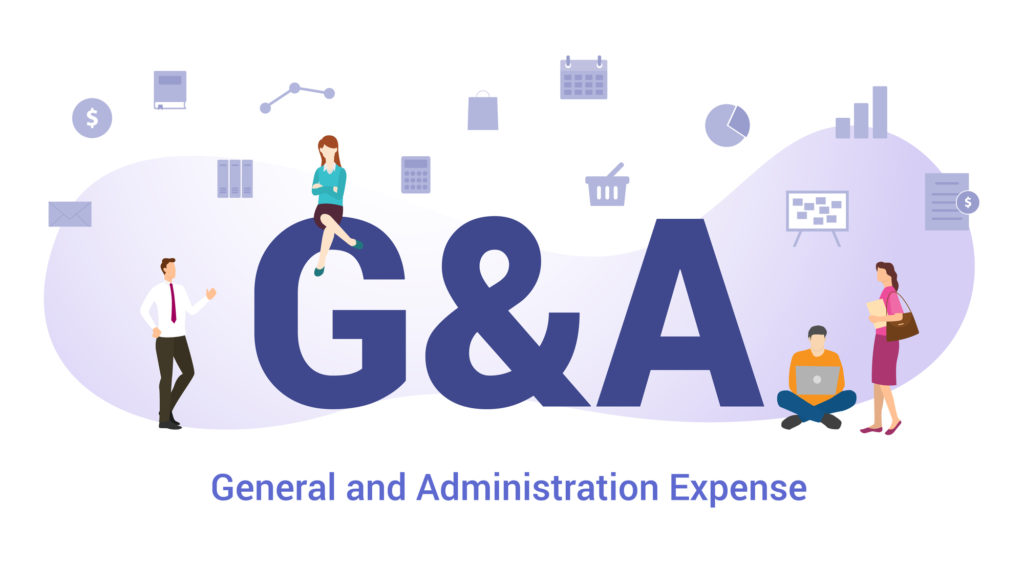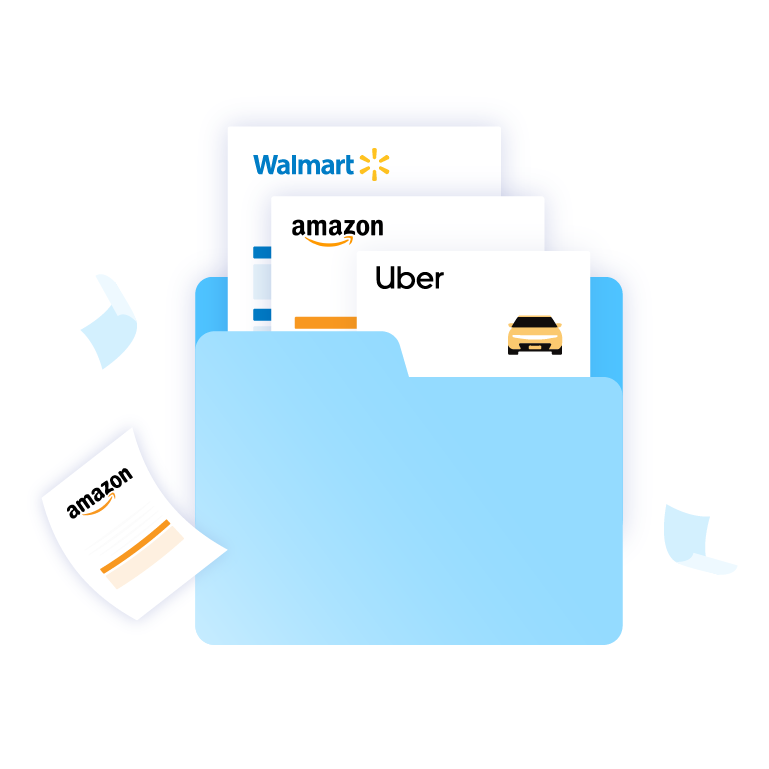General and Administrative Expenses for Very Small Businesses – Complete Guide
At the outset, the critical principle of running small businesses seems related to the cost of goods sold to generate profit. Therefore, all the expenses incurred seem directly related to boosting sales. For instance, a business or a company must procure products or stocks for selling them in the market.

At the outset, the critical principle of running small businesses seems related to the cost of goods sold to generate profit. Therefore, all the expenses incurred seem directly related to boosting sales. For instance, a business or a company must procure products or stocks for selling them in the market.
However, this outlook towards sales and profit generation also neglects several operating expenses. Indeed, these expenses may not directly be linked to the revenue generation for small businesses and companies. These costs are often seen in the income statement. Of course, they may not have a direct impact on the production or selling of products. But, they help in the smooth and able functioning of the business and company.
This article looks at general and administrative expenses in detail. It includes the kinds of costs usually incurred by very small businesses, and how to track them.
What’s in this article?
- What are general and administrative (g&e) expenses?
- Some examples: general and administrative expenses list
- How to find general and administrative expenses
- How to track general and administrative expenses automatically
- Challenges with office expenses
- General and administrative expense budget (with examples)
- Do I need software to track my g&a expenses?
- Summary
What are general and administrative (g&e) expenses?
General and administrative (g&a) expenses are overhead costs incurred for a smooth operation of a business or a company. These costs do not directly relate to the sales or any specific department of the companies. However, despite not being tied to a particular function within the business, g&a costs directly impact businesses. This is due to their periodic recurrence and nature of necessity.
G&a expenses reflect the efficiency of a running business company. Managing these are a few areas improves the cash flow and increases profits in the organization.
Some examples: general and administrative expenses list
Several businesses and companies that differ in their nature of operations usually have standard categories related to their functioning:
1. Rent
For even a small business or a company to function, a working space is imperative. Therefore, most companies include rent as an indirect cost and a separate line item in their income statement. Alternatively, businesses and companies may also incur property taxes for self-owned buildings.

2. Utilities
Running a business or improving a company’s sales comes with its operational costs for essential utilities. Obviously, these expenses include electricity bills, telephone and communication bills, and subscriptions in the income statement.
3. Salaries and wages
Salaries or wages do not directly relate to the business’s sales, but they directly impact the entire organization. For example, the compensation of employees or laborers may differ based on the nature of the company or the business. However, these are some of the administrative expenses that recur in every organization.
4. Office furniture and supplies
Office furniture expenses are upfront costs that usually occur during the set-up or expansion of a business or a company. For example, a proprietor may purchase 15 sets of tables and chairs and lamps for the staff to begin the functioning of the business.
Alternatively, a few office expenses incurred on a day-to-day basis. For example, office stationery or purchasing an ergonomic chair for a staff member. These do not directly impact the production but influence it nonetheless.
5. Electronics and technical supplies
An electronic and technical supplies expense differ according to the nature of the business or the company. Still, most small businesses require basic needs like computer systems and software to function.
These costs may also include developing and maintaining a website, purchasing new software for business accounting, or up-gradation of laptops.
6. Legal counsel
Having a small scale or a large-scale operation, every business and company needs legal assistance from time to time. For example, while recruiting employees, a legal and binding contract becomes necessary, efficiently dealt with by the legal team.
Legal counsel also becomes a separate line item during the taxation cycle. They help calculate the various taxable components of the business and often apply for returns.
How to find general and administrative expenses?
The simplest method of finding g&a expenses is to go through the general ledger accounting book. Alternatively, the company’s income statement or financial transactions or business spending during the business course is an option. Obviously, general and administrative expenses will primarily consist of overhead costs or operating costs. Naturally, these are further divided into sub-categories of classification for more convenient accessibility.
The following are a few types of indirect costs and services that are related to functioning a business. They can help bifurcate them from other costs:
1. Building expenses or Rent
2. Salaries and employee benefits
3. Insurance
4. Licenses and fees
5. Office supplies and furniture
6. Miscellaneous
How to track general and administrative expenses automatically?
The most convenient method to track general and administrative costs automatically is through a spending management tool. Markedly, a spending tracker tool collects data on income generated and expenditure incurred. Explicitly, by monitoring transactions in financial accounts, credit cards, debit cards and e-wallets.
A variety of spending tracker tools and software are available that help businesses classify their various expenses. Using such a management tool also enables the software to analyze financial data. It offers alternatives to squeeze g&a expenses to scale profitability.
Several very small businesses also rely on free trials or free software to track their business expenses and overhead costs.
Challenges with office expenses
Managing overhead expenses while running a small business is a challenge that no one prepares the new proprietors. While operating office expenses, a few issues may arise, primarily about how different people may handle costs differently. To not let your expenses go awry and all over the place, it might benefit considering the following few challenges:
-
Division of duty
One of the biggest challenges with office expenses is office furniture, supplies and technical equipment. Additionally, payments are usually made upfront of setting up a business for a large-scale purchase – usually the setting-up cost. These expenses are easier to classify and record because of the nature of the purchase.
However, issues arise when a particular employee may require an ergonomic chair or a new keyboard or a mouse. These individual and small purchases make handling overhead costs a nightmare.
These are a few of the expenses that can potentially end up as unidentified payments in the income statement. Markedly incurred from the business card or bank account, they must be tackled while accounting.
-
Recurring and non-recurring expenses
Costs associated with running small businesses and companies include recurring and non-recurring expenses. For example, paying salaries, managing the cost of utilities are often regular expenses that are easier to schedule and anticipate. On the other hand, there are unexpected one-off costs and line items. A few examples of non-recurring expenses include unexpected repair for the copy-fax machine or significant legal fees. It can also include replacing obsolete technological equipment.
Managing these sudden office expenses need to be given equal importance while running a business. Particularly by keeping a thorough track of transactions and approvals from the managing team in the organization. Each payment can potentially add administrative strain to the company unless the proprietors are not prepared.
General and administrative expense budget (with examples)
The business manager usually prepares a general and administrative expense budget. He does so to predict all the operating costs that are not directly related to the sales. Regardless, these may incur during a certain business period.
Several small businesses opt for preparing a variety of budgets to track expenses and optimize profit generation. Besides, a g&a budget focuses on the company’s operating cost. It usually includes salaries, depreciation, and office expenses while including fixed and variable costs.
Example
Apart from predicting the salaries to be paid, technological upgrades, and office expenses, a few overhead costs are not included in the g&a expense budget. Obviously, the expenses mentioned above are usually classified as fixed costs. However, variable costs like income taxes or interest are difficult to predict for their dependency on business operations. Moreover, g&a budgets usually prepared before annual budgets and capital expenditure. Still, they make it more difficult for the management to predict or calculate how much debt the business may have. Similarly, taxable incomes are too challenging to expect for their dependency on the business operations and the financial year.
A few of the examples of fixed costs in g&a expense budget are:
– Salaries and employee payroll
– Employee benefits
– Travel expenses
– Insurance
– Rent
– Depreciation
– Legal fees
– Utilities
– Postage
– Miscellaneous
Do I need software to track my g&a expenses?
Even very small businesses incur a considerable share of overhead costs to generate a higher profit margin. However, many g&a expense tracking software also offers a free trial to help the business determine its worth.
1. Automated record-keeping
A general and administrative expense tracker software simplifies the process of keeping a thorough record of transactions. Likewise, it tracks transactions incurred for the smooth functioning of the business.
2. Easier accessibility
The software enables a common platform for all employees and accounting staff to access expenses as and when incurred.
3. Reduces burden on the administrative team
Unquestionably, G&a expense tracker software automates data entry by enabling bank account, credit card, and debit card syncing facility. However, it also streamlines the review and significantly reduces accounting work.
4. Analysis of the business operations
One major advantages of using general and administrative expense tracking software is that it regularly examines the company’s income statement. Thereafter, it works through interactive pie charts and bar graphs about improving cash flow management. A few software also highlight overhead expenses like unnecessary fees and subscriptions to save the business from incurring extra costs.
5. Improves money management
Apart from identifying cost-saving opportunities, such software also controls excessive spending. So, the software works by encouraging businesses to allocate purpose to available resources and promoting development.
Despite the difference in service offered or resources between small businesses and companies, they are moving towards software. Obviously, the focus is that can help manage resources and automate recurring tasks like budgeting and accounting. Not only does using expense tracking software reduces the burden on the company’s accounting department, but it also ensures accuracy. Moreover, it gathers better insights according to the changing business and market trends.
Summary
Thus, the general and administrative expense for an organization contribute to indirect costs and operating expenses over a finance period. Lastly, these could be accounted for and predicted to increase the revenue by improving production capacity and enhancing the selling capabilities. In addition, there are overhead costs beyond the cost of goods sold that must be considered for a financial year. They can significantly help the business scale its sales indirectly.
Don’t forget to share








